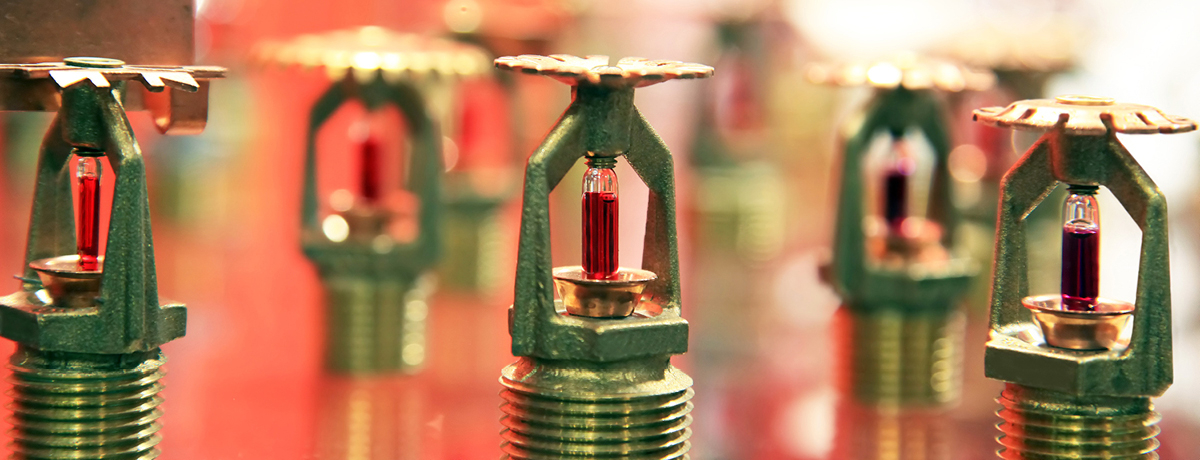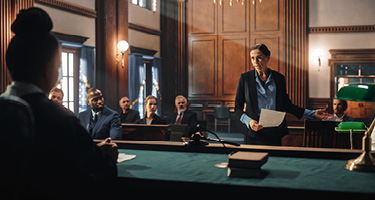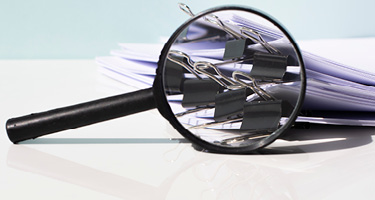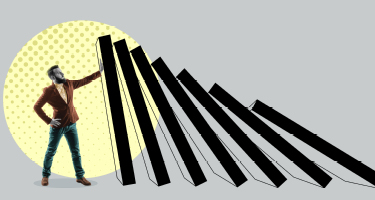Fire-related claims are among the most challenging legal cases to defend. When a fire suppression system fails to act correctly, or fails to engage at all, the building owners will often blame whoever was last near it. That person is often a local contractor or small business owner, though he or she may not be at fault. Suddenly, the contractor becomes a defendant in a multimillion-dollar insurance suit and needs representation.
Connick Law LLC understands these scenarios and, thanks to his record of accomplishment of successful and favorable outcomes in fire litigation, Firm Principal Thomas J. Connick is widely regarded in Ohio and the U.S. as an authority on fire suppression systems.
Connick is recognized in the 2022 edition of The Best Lawyers in America® for Construction - Litigation and has received number accolades from the media and the legal community. He discussed how this collaborative nature and use of visual advocacy has led to favorable results for clients that have preserved their reputation—and in many cases—saved their businesses.

To better understand the science of fire suppression litigation, Best Lawyers recently sat down with Thomas J. Connick.
How are fire suppression systems different from sprinkler systems?
Fire sprinkler systems typically release water. Suppression systems can use non-water-based solutions like chemical, gaseous and foam fire suppression agents – in addition to water – to douse a fire. These substances are used to reduce or limit damage to machinery and electronics in commercial facilities and large residential buildings.
It sounds like there could be an entire science behind fire suppression systems.
There certainly is and defending against fire suppression claims is a narrowly-focused area of law.
Say a fire breaks out and causes substantial damage to a commercial building and officials determine it originated in the air ducts. Who are commonly named as defendants in these insurance claims?
Small businesses and contractors who specialize in fire safety and building maintenance are often the defendants, as well as their insurance companies. I empathize with my clients because I am a small business owner as well, and I know reputation is tied to everything we do. Their assessments may have been accurate at the time of the inspection or maintenance, but various risks could have arisen later.
There is a bottom-line factor as well because these are hard-working professionals who typically perform a $300 duct inspection. Their profits are very thin and now due to circumstances beyond their control, they are being sued for more than $1 million. The disproportionate nature of the figures in the lawsuit are intimidating and a loss in court could bankrupt them.
I empathize with my clients because I am a small business owner as well, and I know reputation is tied to everything we do."
How else are fire suppression claims different from other types of litigation?
Fire insurance cases often go to trial. In a pre-COVID-19 environment, a case would last two years. Now it can be as long as four years, even though the court systems have adapted to video conferenced hearings. Settlements are rare because insurers want to be compensated for the money, they have paid their own client on the claim. These are well-funded plaintiffs, and we are talking about multimillion-dollar claims and reputation risk.
Clearly these cases are different than other injury and insurance litigation matters. There is always more at stake during a trial, but in this area, is it as clear-cut as winning and losing?
There is a result in which the jury finds for the defense, and that is certainly a win. But I believe there is a gray area as well, even if the defendant is partially found to be at fault. For example, I recently defended a client in a fire suppression case where the plaintiff was a major insurance company seeking $990,000 in damages at the start of the trial. We fought hard and the jury awarded the plaintiffs a fraction of what they initially sought.
While the jury found for the plaintiffs, our defense prevented a near-seven-figure loss that could have put my client out of business. I view that as a favorable outcome, and I know the client did as well.
To what do you attribute your record of successful defenses and favorable outcomes of fire suppression system claims?
There are several factors. I’ve been handling these matters for more than 20 years – nearly my entire legal career – so I have a good working knowledge of the science we discussed earlier. I am also well-versed in National Fire Protection Association (NFPA) Code 921, which sets the bar for scientific-based investigation and analysis of fire and explosion incidents. And while I am not a licensed expert, I am certainly surrounded by them. I collaborate regularly with fire safety professionals with decades-long careers in public service and private sectors, and fire scientists who can reconstruct an accident and pinpoint exactly when and where critical details occurred, which can make or break a case.
Every case is different, but my approach always draws from teamwork. It’s a coordinated effort, and I dispatch the team members at the right time so that I can structure my discovery appropriately.
Furthermore, I present these details to judges and juries through use of demonstrative evidence. Words are far more effective in these situations when they are accompanied by images. Judges and juries are often very sophisticated and well educated, but most do not have a background in what causes fires. By supplementing my arguments with visual aids, I can tell the honest story with a 360-degree perspective that is easier to comprehend. Once they understand that my client’s actions were not the cause of the damage, they realize why the plaintiff’s seven-figure claim is not justifiable. Nearly all my results in fire suppression cases have either resulted in drastically reduced damage amounts, or juries and judges ultimately rule in our favor.
Tom, you emphasized how narrowly-focused claims that stem from fire suppression systems can be. What are the qualities that a defendant, insurer or even another injury lawyer should seek for a trial lawyer?
They need a legal professional who understands fire suppression claims, the science of the phenomena, fire codes, has access to and has worked with the best team of experts and is also familiar with the local judges and court system. This can be a tall order but aligning with a lawyer who has these skills and experience can make all the difference between a multimillion-dollar loss and a favorable result.
Any claimant or counsel who needs to defend against a fire suppression claim should speak with a lawyer with experience in this highly-focused area of law.
Learn more about Connick Law LLC’s tradition of success and excellence at www.ConnickLawLLC.com and (216) 364-0512.






























